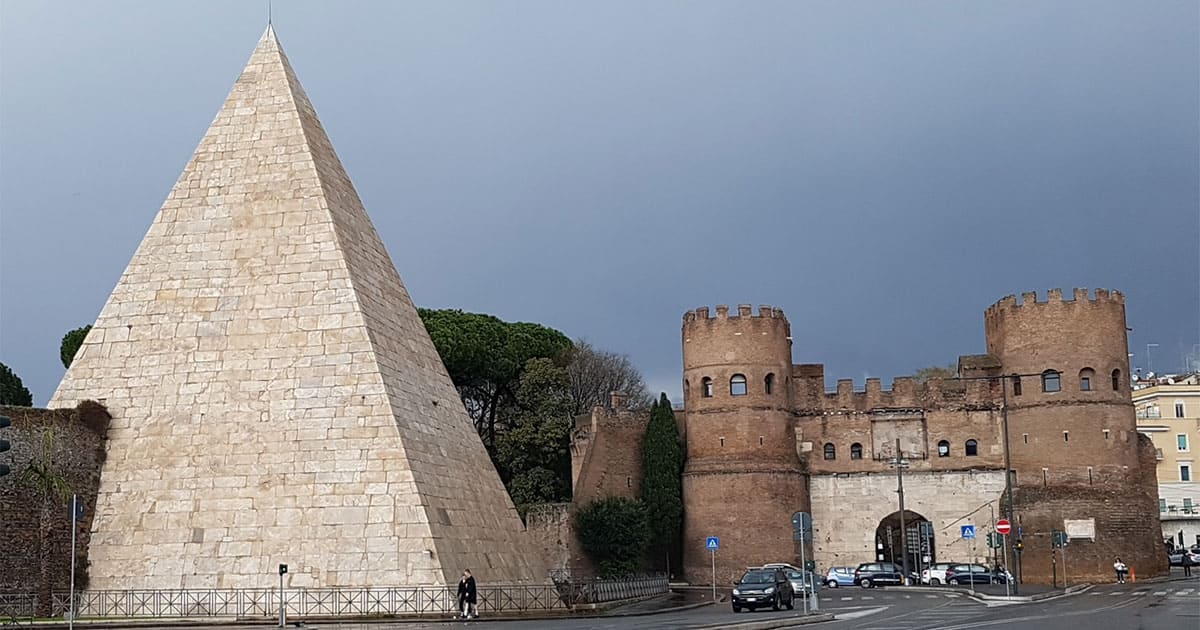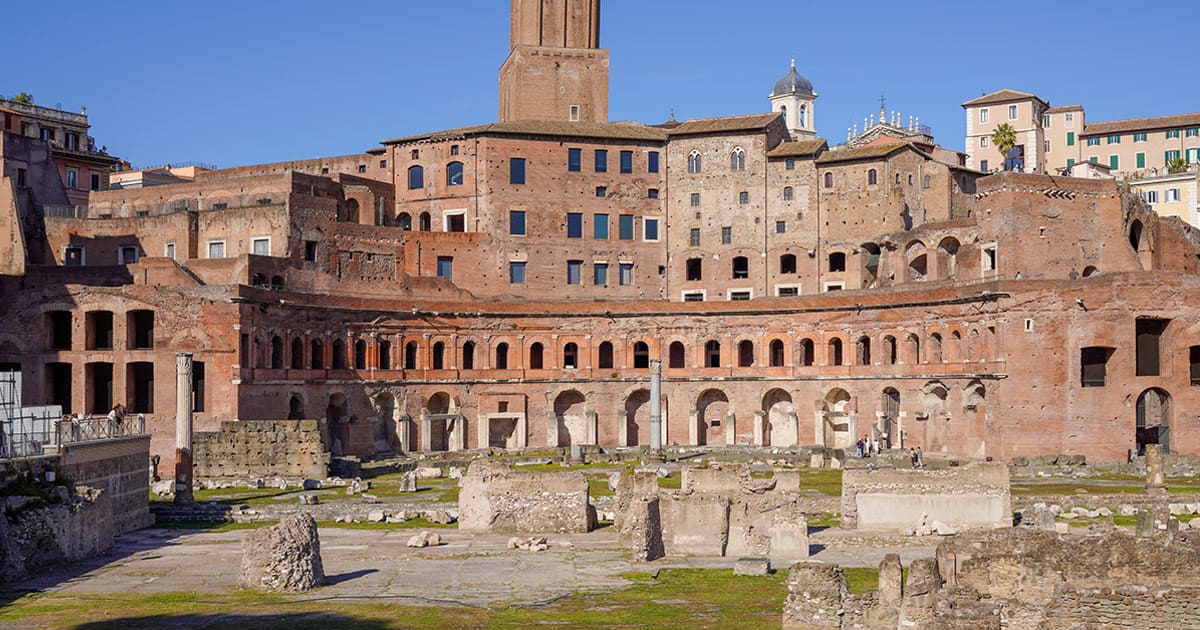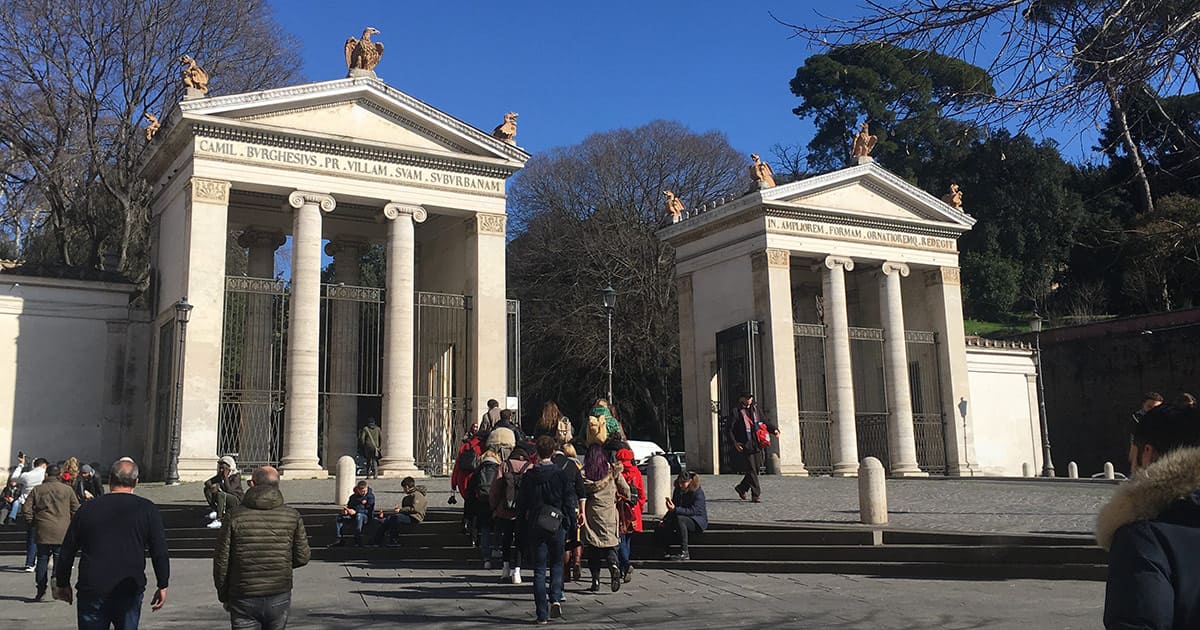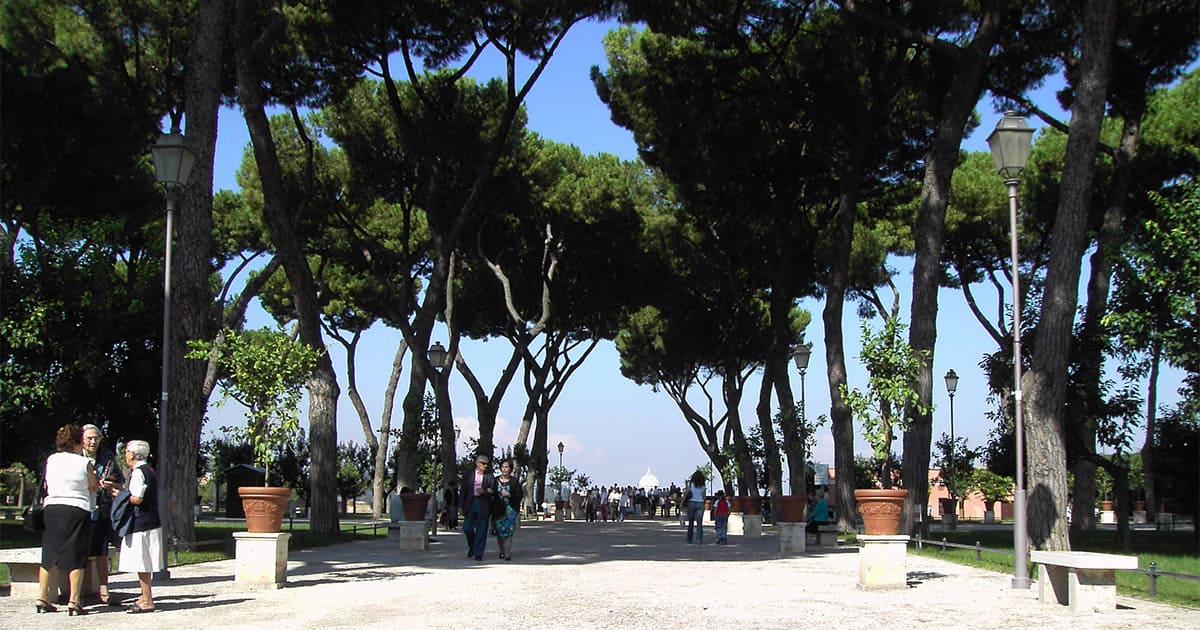Rising unexpectedly amid Rome’s historic landscape, the Pyramid of Cestius is one of the city’s most fascinating monuments. Built over two thousand years ago, it combines Roman engineering with Egyptian-inspired design, standing as a rare example of a pyramid outside Egypt. Located near Porta San Paolo and the Protestant Cemetery, this striking structure continues to captivate historians, architects, and travelers alike.
After exploring the nearby Colosseum and Roman Forum, visitors can enhance their experience with an Ancient Rome: Colosseum Arena & Roman Forum Private Tour by Kirba Tours. It’s the perfect opportunity to discover the city’s most iconic landmarks while learning about the Pyramid’s connection to Rome’s imperial past.
The Tomb of Gaius Cestius
Constructed between 18 and 12 BCE, the Pyramid of Cestius was designed as a tomb for Gaius Cestius Epulo, a magistrate and member of the prestigious College of Epulones—one of ancient Rome’s major religious corporations. The pyramid was completed in just 330 days, as proudly inscribed on its marble façade. Standing 36 meters high and 30 meters wide at the base, it’s made of brick-faced concrete covered with white Carrara marble, blending simplicity with grandeur.
Inside lies a small burial chamber with barrel-vaulted ceilings and once-colorful frescoes. Although plundered in antiquity, the chamber’s remnants still reveal the refined artistry of early Roman funerary decoration. Archaeological studies suggest that the structure was inspired by the steep Nubian pyramids rather than the flatter Egyptian ones, reflecting Rome’s fascination with Egypt after its conquest in 30 BCE.
Roman Engineering Meets Egyptian Inspiration
During the Augustan era, Egypt’s mystique had a profound influence on Roman architecture, religion, and art. Obelisks, sphinxes, and pyramid-like shapes became fashionable symbols of power and eternity. The Pyramid of Cestius perfectly embodies this cultural fusion—an Italian monument shaped by Egyptian aesthetics and Roman precision. Its sharply pointed silhouette mirrors the Nubian style, while its interior design reflects traditional Roman craftsmanship.
Originally located outside the city walls—since burials were forbidden within urban limits—the pyramid was later incorporated into the Aurelian Walls in the 3rd century AD. This fortuitous integration helped preserve it through the ages, making it one of the best-preserved ancient monuments in Rome today.
Inscriptions and Legacy
Two Latin inscriptions carved on its marble surfaces immortalize Gaius Cestius’s titles and achievements. The main inscription honors his service as praetor and tribune of the plebs, while another records the rapid completion of his tomb. Nearby excavations in the 17th century also uncovered the remains of bronze statues that once adorned its base—symbols of wealth and status.
Over time, myths surrounded the pyramid. During the Middle Ages, Romans believed it to be the tomb of Remus, the twin brother of Rome’s founder, Romulus. Its mysterious aura inspired poets and travelers, from Percy Bysshe Shelley to Thomas Hardy, both of whom visited the site and reflected on its symbolism of life, death, and eternity.
A Monument Rediscovered
The Pyramid of Cestius regained attention in the 17th century, when Pope Alexander VII ordered restorations and cleared the vegetation hiding its base. Modern restorations have continued to safeguard the monument, including a major conservation project completed in 2015 thanks to an international collaboration with Japan. Today, visitors can access the interior by guided tour on select weekends, offering a rare glimpse inside this ancient marvel.
Visiting the Pyramid Today
Located just a short walk from the Piramide Metro station, the site is easily accessible and sits at a crossroads between Rome’s ancient and modern worlds. From the nearby Protestant Cemetery, where poets Keats and Shelley are buried, to the lively Testaccio neighborhood, the area offers an evocative mix of art, history, and local life.
Whether you’re fascinated by Roman engineering or drawn to its quiet mystery, the Pyramid of Cestius promises an unforgettable experience. Exploring it with a knowledgeable guide brings the story of Gaius Cestius—and the cultural crossroads of ancient Rome- to life.
Explore Rome’s Hidden Wonders
Few cities blend antiquity and modernity as seamlessly as Rome. A golf cart tour in Rome allows travelers to discover these layers comfortably, from the grandeur of the Colosseum to the enigma of the Pyramid of Cestius. With expert local guides and eco-friendly vehicles, Kirba Tours offers a seamless way to explore the Eternal City—revealing its secrets one stop at a time.
Step into the past, uncover the mysteries of ancient tombs, and let history unfold as you ride through Rome’s timeless streets in comfort and style.
By BeshevI – Own work, CC BY-SA 4.0, Link





